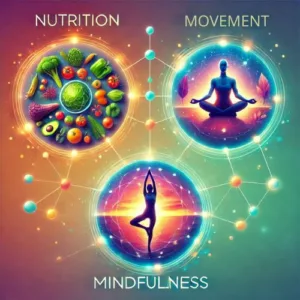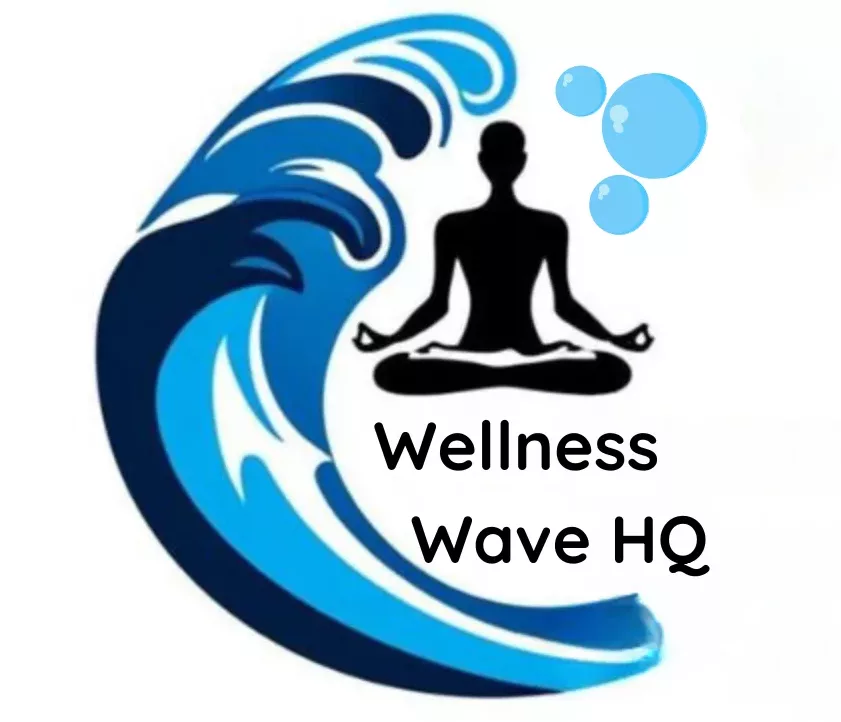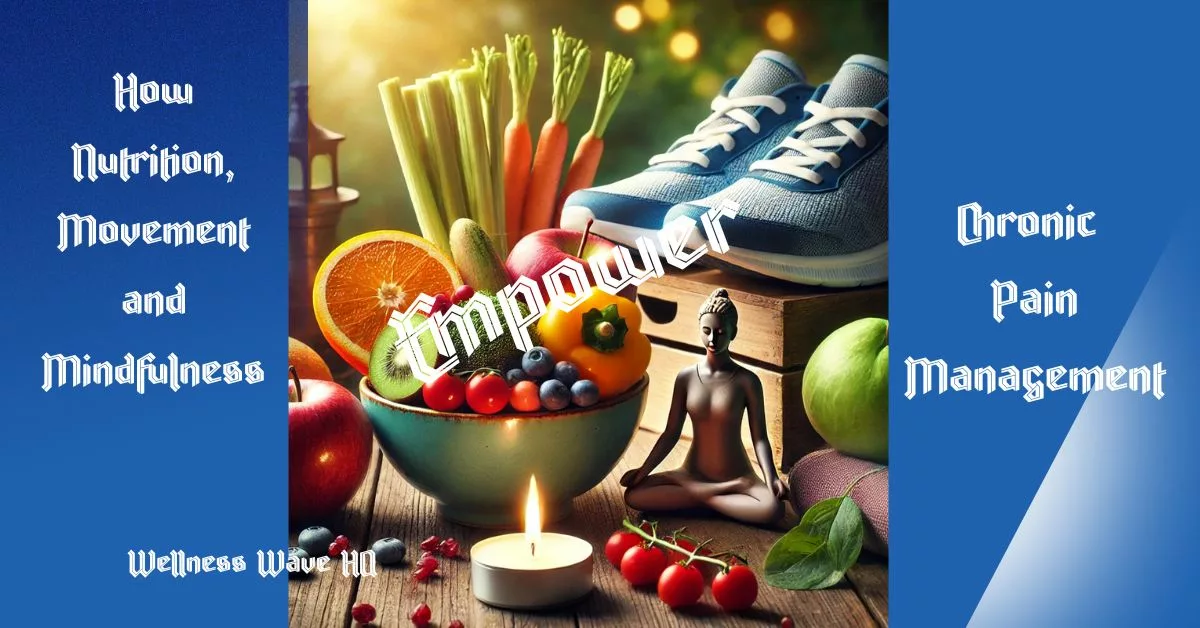Small Steps, Big Changes – Thriving With Chronic Pain
Congratulations on making it through the holidays! Whether you navigated festive meals, managed family gatherings, or simply survived the season, you’ve already taken significant steps forward. It’s time to celebrate those victories.

Before the lovely holidays, we explored the anti-inflammatory diet as a cornerstone for wellness. Those dietary tweaks might have seemed minor, but they’ve already started contributing to a healthier lifestyle.
Now, with a fresh year ahead, there’s a perfect opportunity to expand on those changes. The focus shifts towards integrating movement and mindfulness into your routine, complementing the dietary improvements. These additions create a comprehensive blueprint for managing chronic pain, improving quality of life, and achieving sustainable progress.
The new year isn’t just about resolutions; it’s about meaningful progress. Combining better nutrition with physical activities and mental health practices could set the stage for a transformative journey. Let’s embrace this quest for balance, aiming for sustainable changes that suit your unique needs.
The Interconnection Between Nutrition, Movement, and Mental Health
Nutrition, movement, and mental health often work hand in hand. When balanced, they contribute significantly to managing chronic pain.
Here’s Why:
- Nutrition Fuels Energy: Food isn’t just fuel; it’s the basis for building energy. Eating right supplies your body with essential nutrients, promoting better energy levels for movement.
- Movement Relieves Pain: Even gentle activity releases endorphins—those wonderful little chemicals that uplift your mood, reduce inflammation, and improve flexibility over time. Think of movement as a natural pain reliever.
- Mindfulness Enhances Resilience: Staying present helps manage setbacks and fosters self-compassion during tough days.

Scientific studies back up this synergy:
- A study indexed on PubMed (April 2024) found that fibromyalgia patients who followed a personalized Mediterranean diet experienced significant improvements in pain levels and quality of life.
- Another study in Nutrients (April 2024) reported that higher adherence to the Mediterranean diet was associated with lower pain intensity and reduced fibromyalgia severity.
Each of these practices—nutrition, movement, mindfulness—individually offers benefits. Together, they shape a more resilient you, equipped to handle chronic pain with grace.
Debunking Fitness Myths for Chronic Pain
Exercise often comes with its share of myths, especially when dealing with chronic pain. One common misconception is that physical activity will make chronic pain worse. In reality, when done appropriately, exercise can offer immense benefits.
FACT #1: Tailored exercise programs, specifically designed for those with chronic pain, can actually reduce inflammation in the body. They strengthen the muscles that support painful joints and enhance flexibility and mobility.
FACT #2: Yoga improves flexibility and lowers cortisol levels, a key stress hormone. A gentle yoga routine can be a game-changer for pain management.
FACT #3: Water-based exercises minimize joint stress while providing cardiovascular benefits. Such exercises offer a painless way to maintain joint mobility and overall fitness. 
Addressing these myths is crucial. Embracing the right kind of movement can empower you to manage and reduce chronic pain effectively.
Small Steps Toward Fitness
Getting started with fitness doesn’t have to be overwhelming, especially when dealing with chronic pain. Embracing small, manageable steps can make all the difference.
Suggestions:
- Start with morning stretches to ease stiffness or take short, leisurely walks.
- Try chair yoga for seated, mindful movement without overexertion.
- Use tools like fitness trackers or apps tailored for chronic pain management to monitor progress.
- Invest in ergonomic shoes or funky, cute compression socks to reduce fatigue. (They really do have some out there!)
Success Story: Take Jane’s journey, for example. Living with fibromyalgia, she started with five minutes of stretching daily. Over time, her energy levels increased, and flare-ups became less frequent. ![]()
Small steps accumulate into big changes. Adjust to what works for you and celebrate even the tiniest victories on your path to wellness.
Preview of What’s Next: A Fitness Journey Ahead
Your journey toward fitness continues with exploring various low-impact exercises tailored to chronic pain. Setting up a chronic pain-friendly fitness plan will be an ongoing topic. We’ll explore:
- Yoga: For flexibility and stress reduction.
- Water Exercises: Joint-friendly cardiovascular movement.
- Tai Chi: Gentle, mindful motion for balance and pain relief.
We’ll also tackle strategies for managing pain flare-ups and maintaining consistency, even on challenging days. Learn how to adapt your routines to fit your energy levels and unique symptoms—because there’s no one-size-fits-all approach to chronic pain management.
Remember, this journey isn’t about reaching perfection. It’s all about making progress and finding a path that feels right for you. Every small step counts and moves you closer to improved wellness.  I’m here to cheer you on as we embark on this journey together, focusing on gradual growth and sustainability.
I’m here to cheer you on as we embark on this journey together, focusing on gradual growth and sustainability.
Final Thoughts: Encouragement and Next Steps
Combining nutrition, movement, and mindfulness offers a powerful approach to managing chronic pain. Each element plays its own role and, together, they pave the way for remarkable improvements in overall well-being.
Your journey is uniquely yours, and it’s vital to embrace the small, consistent steps that drive positive change. Progress isn’t linear, and that’s okay. Celebrate every small victory along the way. (Don’t forget: “one foot in front of the other“.)

*Bookmark the Page
*Engage with the Content: Share it with friends or loved ones who might benefit.
*Leave your comments or concerns below: Let us know your goals or questions.
Are you excited about this next chapter? I’d love to hear your goals or any questions you might have. Together, we can continue to build a supportive community on the path to thriving with chronic pain.
![]()
We understand that starting or continuing your wellness journey with chronic pain can bring up many questions. To support you, we’ve compiled answers to some of the most common questions about nutrition, movement, and mindfulness for chronic pain management.
Frequently Asked Questions About Managing Chronic Pain
Q1: Can exercise really help with chronic pain, or will it make my condition worse?
A1: Contrary to common myths, gentle, low-impact exercise can alleviate chronic pain. Activities like yoga, swimming, and walking reduce inflammation, improve flexibility, and release endorphins—natural pain relievers.
Q2: What types of exercises are best for someone with fibromyalgia or arthritis?
A2: Gentle exercises like yoga, tai chi, and water-based activities are excellent for conditions like fibromyalgia and arthritis. These exercises reduce joint strain, improve mobility, and enhance relaxation.
Q3: How does nutrition impact chronic pain management?
A3: Nutrition plays a vital role in managing chronic pain. Anti-inflammatory diets rich in fruits, vegetables, whole grains, and omega-3 fatty acids reduce inflammation and pain intensity.
Q4: What is mindfulness, and how does it help with chronic pain?
A4: Mindfulness involves staying present and acknowledging feelings without judgment. It helps manage chronic pain by reducing stress and enhancing resilience.
Q5: How can I start exercising when I’m already dealing with pain and fatigue?
A5: Start small with stretching, short walks, or chair yoga. Use tools like fitness trackers to monitor progress. Consistency and patience are key.
Q6: Are there any tools or apps to help manage chronic pain?
A6: Yes! Pain-tracking apps, fitness trackers, and mindfulness apps like Mindfulness.com can monitor symptoms and keep you motivated.
Q7: How do I handle flare-ups while maintaining a fitness routine?
A7: During a flare-up, focus on rest and gentle stretches. Adapt routines to fit energy levels, and remember that consistency over time is more important than perfection.
COME AND JOIN OUR COMMUNITY


“Your blog beautifully captures the essence of progress through small, intentional steps. The connection between nutrition, movement, and mindfulness is so empowering, especially for those managing chronic pain. It’s inspiring to see how even minor adjustments can lead to transformative changes over time. I appreciate how you debunk common fitness myths and provide actionable advice—this is a fantastic resource for anyone on their wellness journey. Looking forward to exploring the upcoming topics on tailored fitness plans!”
Thank you so much for your thoughtful comment, Herman! It truly means the world to hear that the blog connected with you and that the connections between nutrition, movement, and mindfulness felt empowering. My goal is to provide practical, actionable advice that makes wellness feel attainable, even in the face of chronic pain. Debunking those fitness myths was an important part for me, so I’m thrilled to know you found value in it. I’m excited to share the upcoming topics on tailored fitness plans, and I hope they continue to support you on your wellness journey. Your kind words keep me inspired—thank you again! 😊
Warm regards,
Courtney